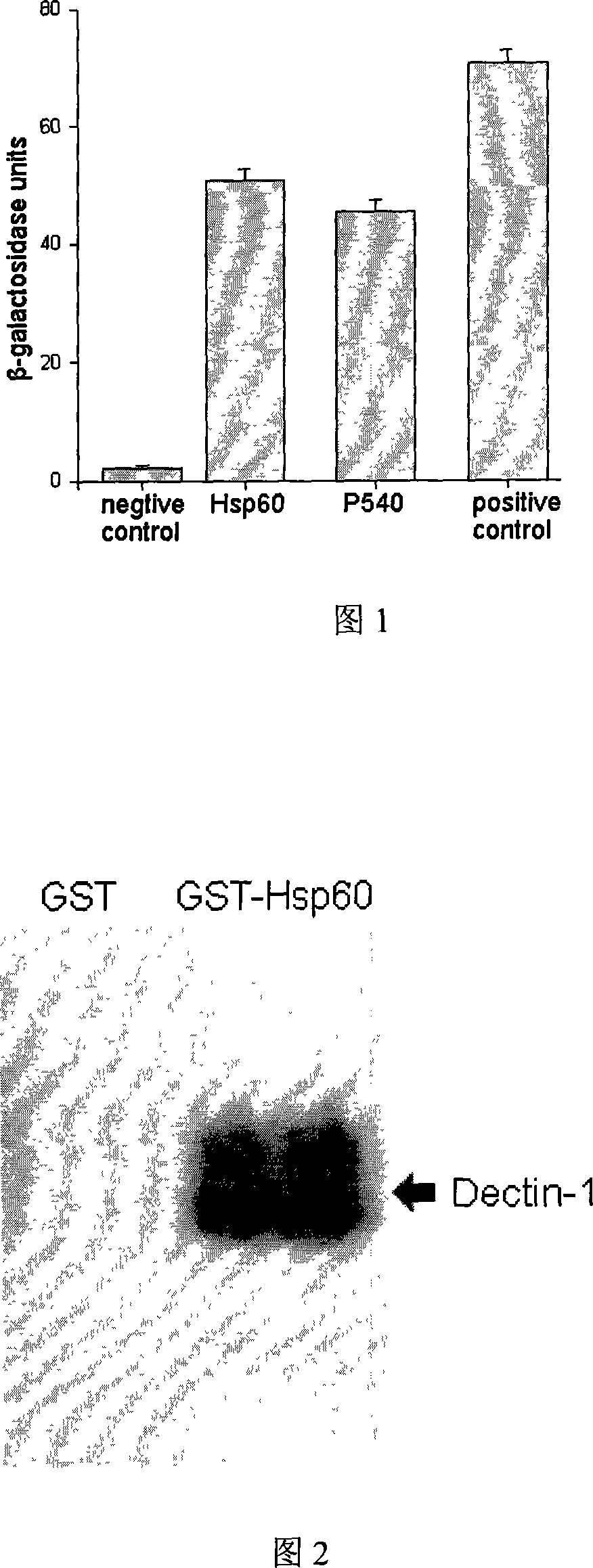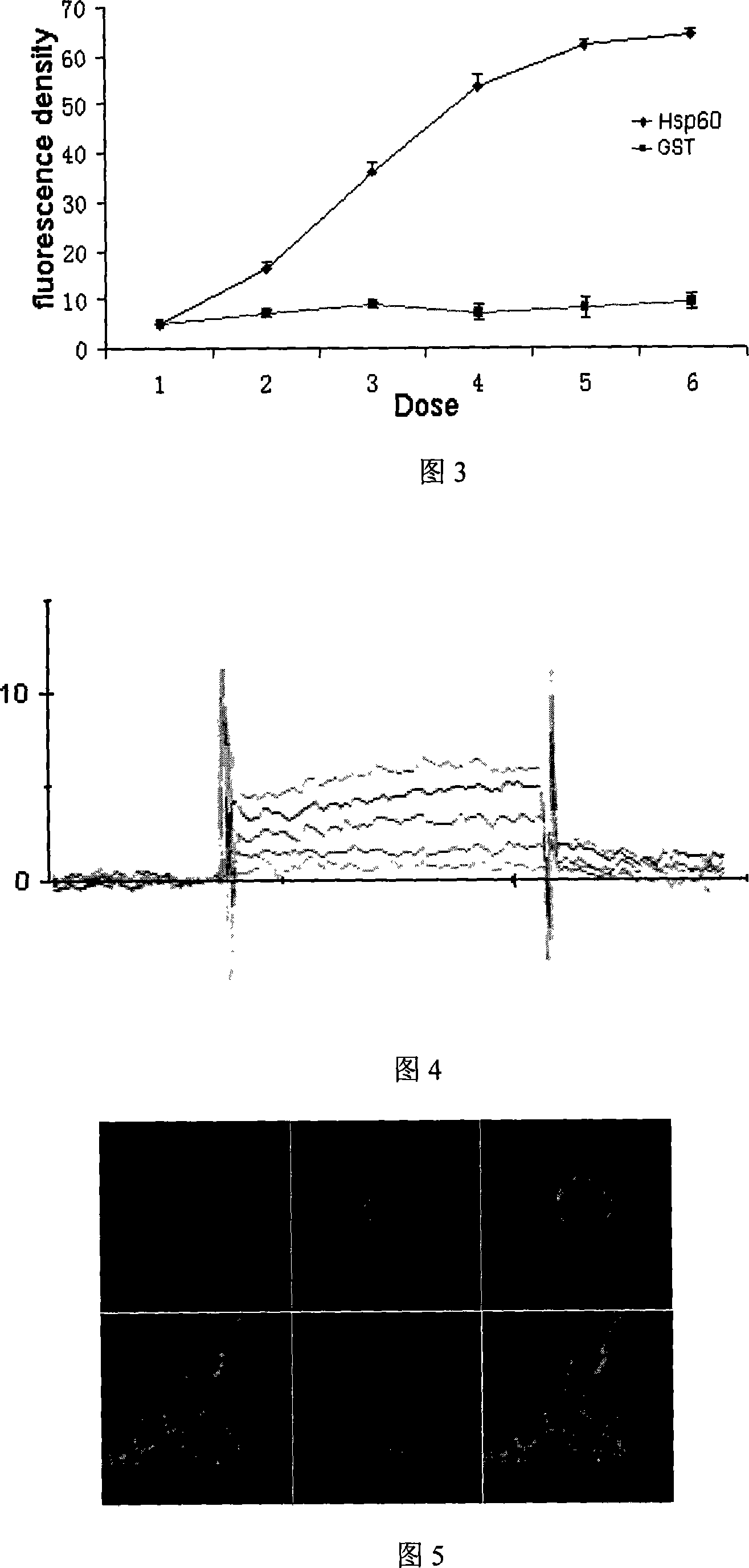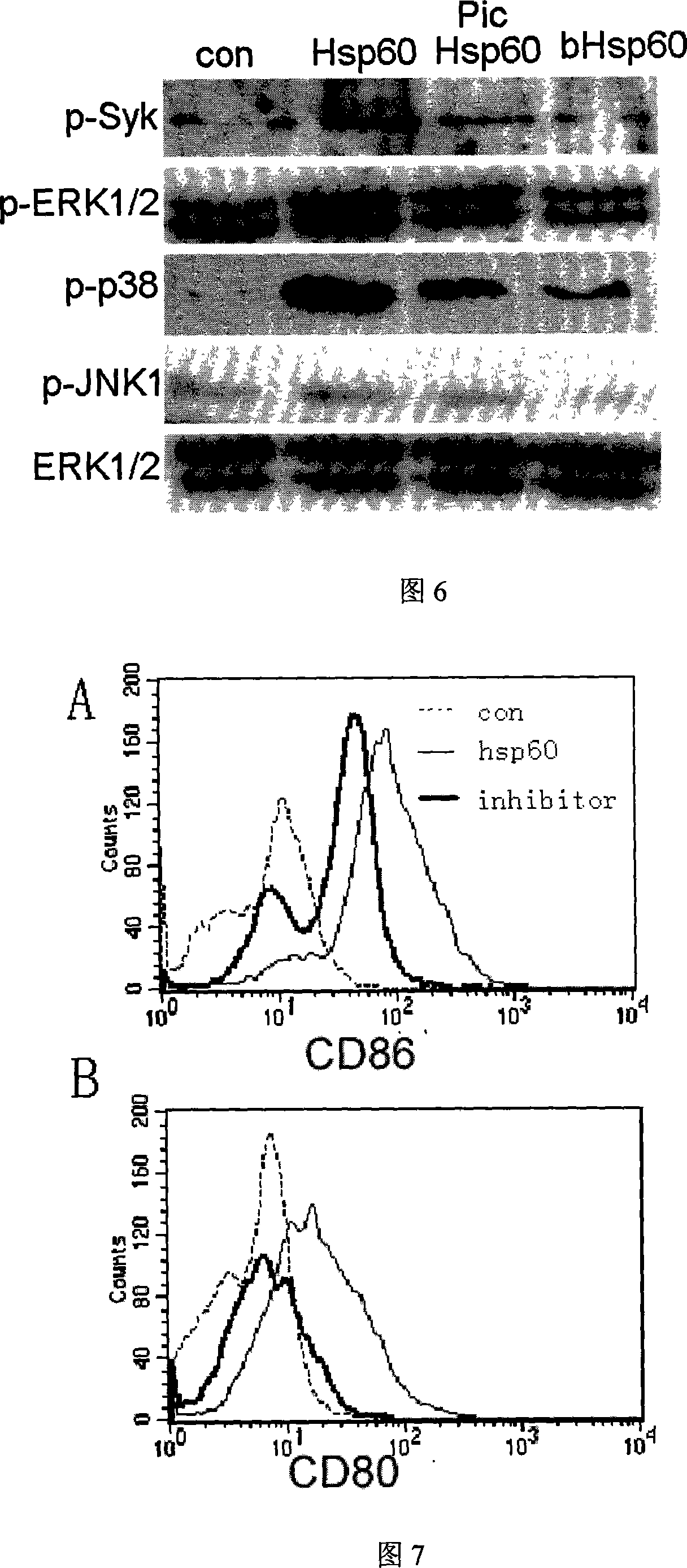Dectin-1 and heat shock protein Hsp60 polymer and coding nucleic acid and application thereof
A dectin-1, heat shock protein technology, applied in the field of lectin receptor Dectin-1 and heat shock protein Hsp60 polymer, can solve the problem of not being identified
- Summary
- Abstract
- Description
- Claims
- Application Information
AI Technical Summary
Problems solved by technology
Method used
Image
Examples
Embodiment 1
[0041] The cDNA of human Hsp60 and the cDNA of P550 were respectively connected to the pGEX-4T-1 vector by molecular biology techniques, transformed into DH5α, and the positive clones screened by ampicillin were purified by plasmids and sequenced to prove that the sequences of the selected clones were correct. Named pGEX-4T / Hsp60, pGEX-4T / P540. Transform BL21 Escherichia coli with pGEX-4T / Hsp60 and pGEX-4T / P540 plasmids respectively, pick clones and inoculate them into LB culture medium, and culture them at 37°C. induced expression. Cells were harvested and lysed 4 hours after induction of expression. According to the GST purification manual, purify the target protein by GST beads. The purified product was identified as the target protein Hsp60 and P540 by SDS-PAGE and Western blot.
Embodiment 2
[0043] The extracellular segment (aa112-247) cDNA of human Dectin-1 was inserted into the pGBKT7 vector with EcoRI and BamHI sites through molecular cloning technology, and then transformed into DH5α. Positive clones were screened by kalamycin, and single-clonal colonies were selected and extracted. Plasmids were identified by sequencing. The results showed that the cDNA sequence of the extracellular segment (aa112-247) of human Dectin-1 was consistent with the reading frame of the vector. The vector is called pGBKT7 / CTLD. The pGBKT7 / CTLD and pGADT7 vectors were co-transformed into AH109 yeast and screened on the medium. The results showed that pGBKT7 / CTLD had no self-activation phenomenon.
[0044] According to the yeast two-hybrid operation manual of Clontech Company, pGBKT7-CTLD was used to screen the cDNA library of human thymus. Select positive clones that can grow in SD-Ade / -His / -Leu / -Trp / X-a-Gal medium and turn blue, and perform plasmid isolation and sequencing on the ...
Embodiment 3
[0054] The cDNA of human Dectin-1 is cloned into the vector according to the reading frame of the pCDNA3.1 / Myc vector by molecular biology techniques. Among them, the cDNA stop codon of human Dectin-1 is deleted, and the Dectin-1 / Myc fusion protein can be produced. Sequencing showed that the constructed plasmid was correct and named pMyc-Dectin-1. HEK293T cells were transfected with pMyc-Dectin-1, and the cells were collected 48 hours later, and the cells were lysed in the lysate for immunoprecipitation experiments. Proceed as follows:
[0055] 1. The prokaryotic expressed Hsp60 in Example 1 was incubated with GST sepharose 4B beads in rotation for 2 hours at 4°C, and washed once with cold PBS.
[0056] 2. The beads from step 1 were then incubated with the above-mentioned cell lysate at 4°C for 4 hours, then centrifuged, washed the beads three times with cold lysis buffer, added loading buffer and boiled for 10 minutes for immunoblotting.
[0057] The results showed that Hs...
PUM
 Login to View More
Login to View More Abstract
Description
Claims
Application Information
 Login to View More
Login to View More - R&D
- Intellectual Property
- Life Sciences
- Materials
- Tech Scout
- Unparalleled Data Quality
- Higher Quality Content
- 60% Fewer Hallucinations
Browse by: Latest US Patents, China's latest patents, Technical Efficacy Thesaurus, Application Domain, Technology Topic, Popular Technical Reports.
© 2025 PatSnap. All rights reserved.Legal|Privacy policy|Modern Slavery Act Transparency Statement|Sitemap|About US| Contact US: help@patsnap.com



